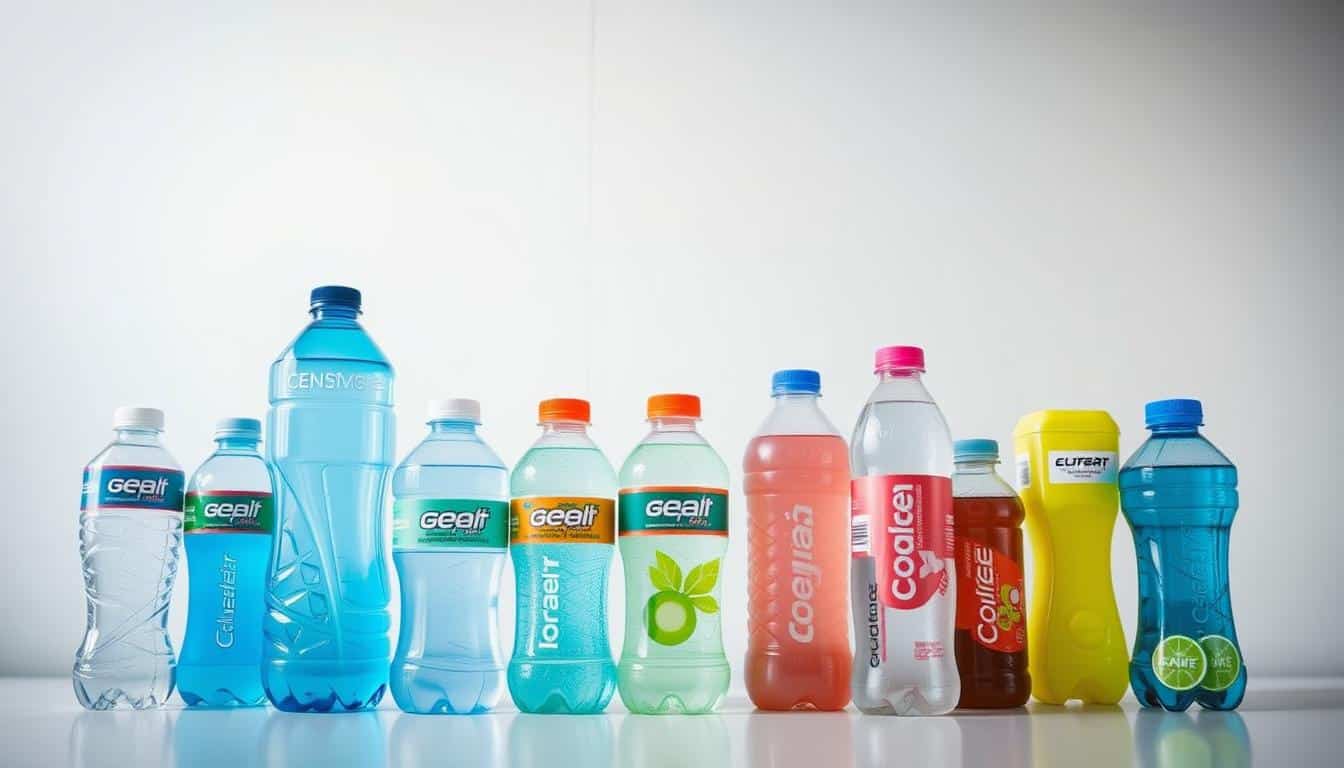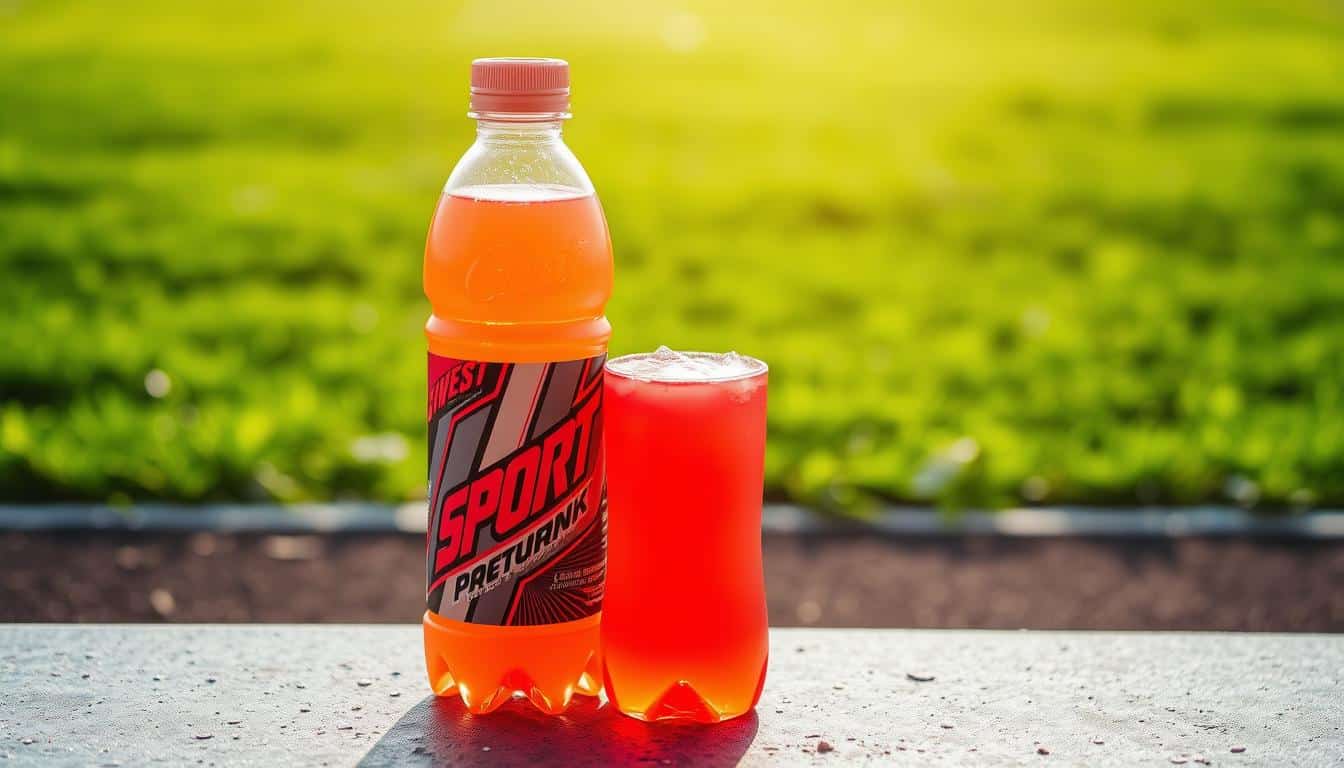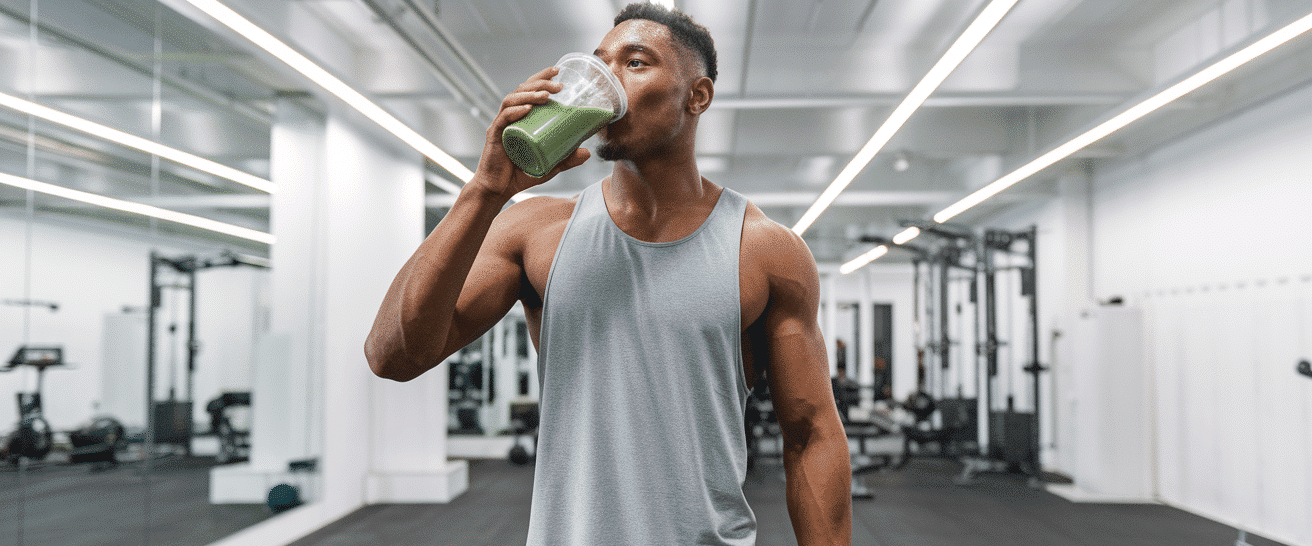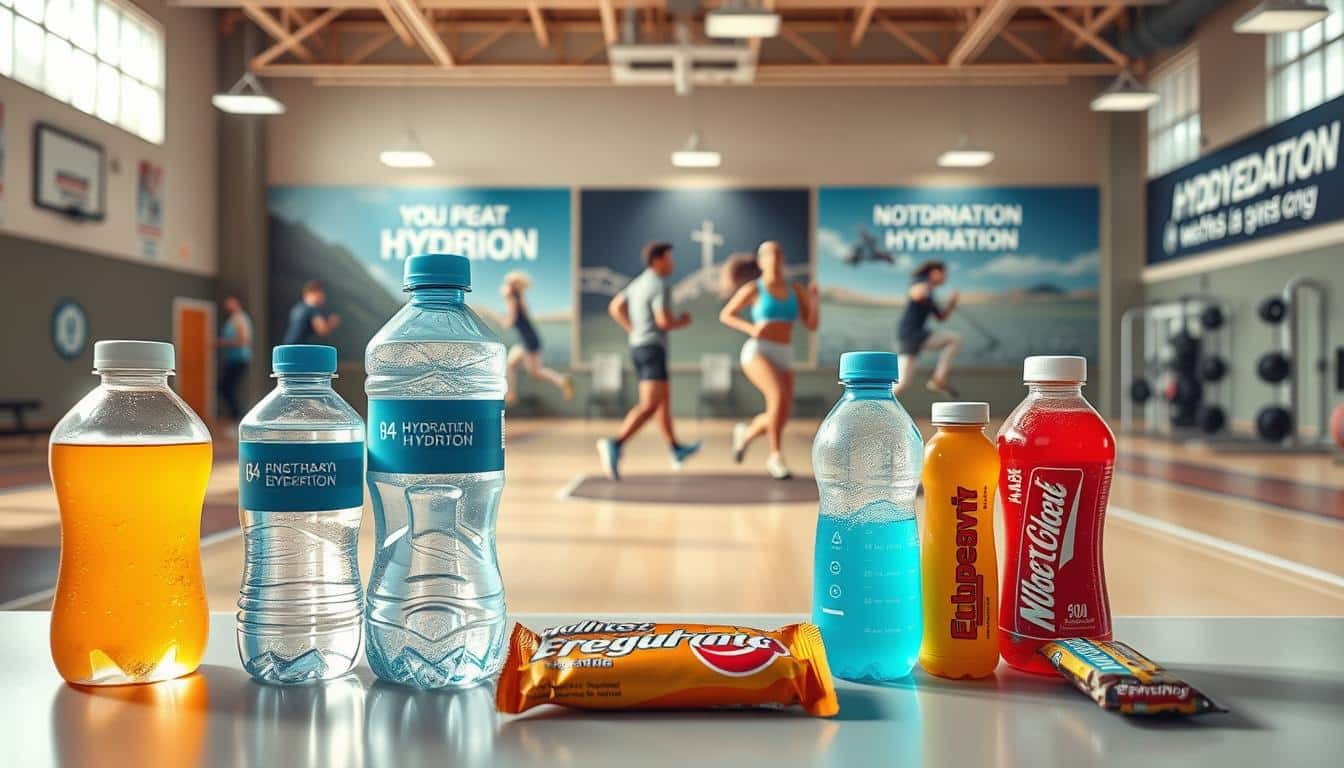Did you know that losing just 2% of your body weight due to fluid loss can significantly impact your performance? For a 150-pound person, that’s only 3 pounds of sweat. Yet, many athletes still follow outdated advice that could be holding them back.
From the belief that you must drink eight glasses of water daily to the overuse of sugary sports drinks, there’s a lot of confusion out there. These misconceptions can lead to ineffective habits that don’t support your goals.
Understanding the truth about fluid intake is crucial. Your body’s needs vary based on activity level, climate, and even the foods you eat. Let’s clear up the confusion and focus on what really works for peak performance.
Overview of Hydration Advice in Athletics
Your body’s fluid needs are more complex than you might think. For athletes, maintaining the right balance is crucial for peak performance and overall health. Proper fluid intake supports everything from muscle function to mental clarity.

Importance of Proper Hydration
Staying hydrated isn’t just about drinking water—it’s about timing and balance. During exercise, your body loses fluids through sweat, and even a small drop can affect your performance. Studies show that a 2-3% loss in body weight due to fluid loss can lead to fatigue and reduced endurance.
Your fluid needs depend on factors like activity level, climate, and even the foods you eat. For example, foods with high water content, like fruits and vegetables, can contribute to your daily intake. This makes it easier to stay hydrated without relying solely on drinks.
Common Hydration Misconceptions
Many athletes believe they should drink only when thirsty. However, thirst often appears after a significant fluid loss. By then, your performance may already be impacted. Instead, check your urine color—a pale yellow indicates good hydration, while dark yellow suggests you need more fluids.
Another misconception is that sports drinks are always the best choice. While they can be helpful during intense workouts, water and nutrient-rich foods often provide what your body needs. Simple habits, like sipping water throughout the day, can make a big difference.
Remember, hydration isn’t just about water—it’s about maintaining a balance that supports your health and athletic goals. By paying attention to your body’s signals and making smart choices, you can stay at the top of your game.
Debunking Common Hydration Myths in Sports
Let’s tackle some of the most persistent misconceptions about fluid intake for athletes. From outdated rules to misleading marketing, it’s time to separate fact from fiction.

Myth: Drinking 8 Glasses of Water Daily
The idea that everyone needs eight glasses of water daily is a myth. Your fluid needs depend on factors like activity level, climate, and diet. Overdoing it can lead to water toxicity or hyponatremia, a dangerous drop in sodium levels.
Studies show that overhydration can cause symptoms like nausea, confusion, and even seizures. Instead of following a one-size-fits-all rule, listen to your body. Check your urine color—pale yellow means you’re on track.
Myth: Sports Drinks Are Always Superior
Sports drinks are often marketed as the ultimate beverage for athletes. While they can help during intense workouts lasting over an hour, they’re not always necessary. Many contain high levels of sugar and artificial ingredients.
For shorter or less intense activities, plain water is usually enough. If you need electrolytes, consider alternatives like coconut water or electrolyte-infused beverages. Always read labels to choose low-sugar, low-additive options.
By understanding your body’s needs, you can make smarter choices about what and how much to drink. It’s all about balance and adaptability.
Evaluating Fluid Intake Recommendations
How much you drink should match your weight, activity, and environment. Finding the right amount of fluids can boost your performance and keep you feeling your best. Let’s break it down into simple, actionable steps.
Weight-Based Water Intake
Your weight plays a big role in determining how much you should drink. A common guideline is to take one-third of your body weight in ounces. For example, if you weigh 150 pounds, aim for 50 ounces of water daily.
Here’s a quick breakdown:
- 120 pounds: 40 ounces
- 150 pounds: 50 ounces
- 180 pounds: 60 ounces
Adjust this based on your activity level. If you’re training hard or in hot weather, you’ll need more.
Daily Fluid Guidelines for Active Individuals
The National Academy of Medicine suggests about 13 cups per day for men and 9 for women. This includes all fluids, not just water. For athletes, this amount often increases.
Consider these tips:
- Drink 16-20 ounces of water 2 hours before activity.
- Sip 7-10 ounces every 10-20 minutes during exercise.
- Replenish with 16-24 ounces after your workout.
Remember, timing matters. Spread your fluid intake throughout the day to stay sharp and energized.
By tailoring your drinking habits to your body and routine, you’ll perform better and recover faster. It’s all about finding what works for you.
Role of Electrolytes and Sports Drinks
Electrolytes play a crucial role in keeping your body balanced during intense workouts. They help regulate muscle function, nerve signals, and fluid balance. When you sweat, you lose these essential minerals, which can impact your performance and recovery.
Understanding when to use electrolyte beverages and when to opt for healthier alternatives can make a big difference in your exercise routine. Let’s break it down so you can make the best choice for your body.
When to Use Electrolyte Beverages
Electrolyte drinks are most beneficial during long or intense exercise sessions. If you’re sweating heavily or working out for over an hour, these beverages can help replenish lost minerals like sodium and potassium. This is especially important in hot or humid conditions.
However, not all electrolyte drinks are created equal. Many contain high levels of sugar and artificial ingredients. Reading nutrition labels is key to making an informed choice. Look for options with lower sugar content and natural ingredients.
Alternatives to Processed Sports Drinks
For shorter or less intense workouts, plain water is often enough. If you need electrolytes, consider healthier alternatives like coconut water or naturally flavored water. These options provide the same benefits without the added sugar and chemicals.
Your diet also plays a role in maintaining electrolyte balance. Foods like bananas, avocados, and pickles are rich in essential minerals. Incorporating these into your meals can support muscle recovery and overall health.
Listening to your body is crucial. If you’re unsure about your condition, consult an expert for personalized advice. Small adjustments to your hydration strategy can lead to big improvements in your performance and well-being.
Hydration Signals: Beyond Thirst
Your body gives clear signals when it needs more fluids. While thirst is a common indicator, it’s not always the first sign of dehydration. By the time you feel thirsty, your body may already be lacking the fluids it needs to perform at its best.
Interpreting Urine Color as an Indicator
One of the simplest ways to check your hydration level is by looking at your urine color. Pale or light straw-colored urine usually means you’re well-hydrated. Darker shades, like amber or brown, often indicate you need to drink more fluids.
Here’s a quick guide to interpreting urine color:
- Pale yellow: Optimal hydration.
- Dark yellow: Mild dehydration—time to drink water.
- Amber or brown: Severe dehydration—act immediately.
While urine color is a handy tool, it’s not perfect. Factors like nutrition, supplements, or even certain diseases can alter its appearance. For example, vitamin B supplements might turn your urine bright yellow, even if you’re hydrated.
For a more accurate measure, blood tests can assess your hydration level. However, these require a clinical setting. Checking your urine color regularly is a practical way to stay on top of your fluid intake.
Remember, small adjustments can make a big difference. Keep an eye on your urine color and adjust your drinking habits as needed. Staying hydrated is key to feeling your best and performing at your peak.
Practical Strategies for Staying Hydrated
Staying on top of your fluid intake doesn’t have to be complicated—here’s how to make it simple and effective. Small adjustments in your daily routine can have a big impact on how you feel and perform. Let’s dive into some easy-to-follow tips that work for every person.
Simple Daily Checks and Reminders
One of the easiest ways to stay consistent is by setting reminders. Use your phone or a hydration app to prompt you to drink water throughout the day. Another helpful way is to carry a reusable water bottle. This keeps water within reach and serves as a visual reminder to sip regularly.
Checking your urine color is another quick way to gauge your fluid levels. Aim for a pale yellow shade, which indicates proper balance. If it’s darker, it’s time to drink up.
Choosing the Right Beverages for Activity
Not all drinks are created equal. For most daily activities, water is the best type of beverage. If you’re looking for flavor, try infusing water with fruits like lemon, berries, or cucumber. This adds a refreshing twist without the added sugar found in soda.
For intense workouts or long sessions, electrolyte drinks can be beneficial. However, not all sports drinks are the same. Compare labels to choose options with lower sugar content and natural ingredients.
| Beverage Type | Best For | Notes |
|---|---|---|
| Water | Daily use, light activity | Zero calories, no additives |
| Infused Water | Flavor variety | Natural, low-calorie option |
| Sports Drinks | Intense workouts | Choose low-sugar options |
| Soda | Occasional treat | High in sugar, not ideal for hydration |
Adopting one new habit each year can help you steadily improve your routine. For example, start by carrying a water bottle this year, and next year, focus on tracking your intake. Small changes add up over time.
Remember, the best way to stay hydrated is to find what works for you. Experiment with these tips and adjust as needed to support your goals.
Conclusion
Personalized strategies make all the difference in staying balanced. Throughout this article, we’ve debunked common misconceptions and provided actionable corrections. From understanding your body’s signals to choosing the right beverages, it’s clear that one-size-fits-all advice doesn’t work.
Reliable guidance and simple adjustments can help you feel and perform your best. For example, checking your urine color is a quick way to gauge your fluid levels. Pale yellow means you’re on track, while darker shades suggest it’s time to drink up.
Even as an adult, your needs are unique. Factors like activity level, climate, and diet play a role. Small changes, like carrying a water bottle or setting reminders, can make a big impact.
Reconsider long-held beliefs and adopt a balanced approach. Whether you’re a casual gym-goer or a professional athlete, these insights can help you optimize your routine. Remember, staying properly hydrated is about listening to your body and making smart choices.
As an adult, your fluid needs are worth monitoring carefully. Take these tips, tailor them to your lifestyle, and enjoy the benefits of feeling your best every day.


